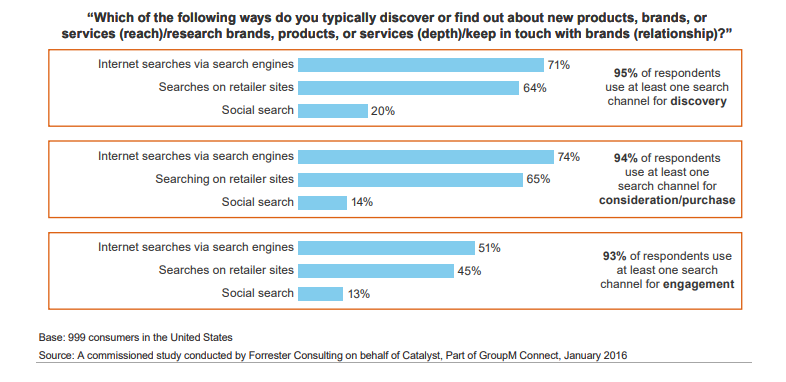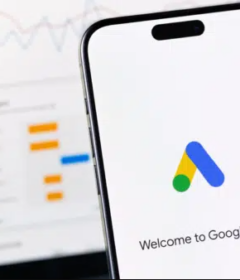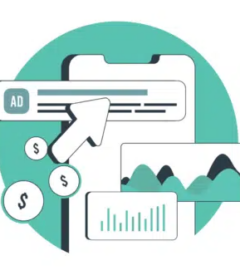Improving the customer experience means getting search right

The role of search is expanding and diversifying at an accelerating pace. In the age of assistance, search is everywhere and embedded within a range of home devices and smartphones. You can search from more places than ever before, through voice, image or text.
A report by Brightedge (my company) reveals that 57 percent of all website traffic is mobile and 20 percent of mobile queries are voice-activated. These trends look set to become even further embedded over time. Simultaneously, search is moving beyond the traditional web and will soon incorporate augmented reality, alongside existing elements like podcasts and videos.
This has made search more complex for marketers, but its significance is growing, too, as is evidenced by reports being published.
More than 90 percent of consumers report they use search at every stage of their customer lifecycle, a statistic that highlights just how wide-ranging a modern search strategy should be.

A different Brightedge report shows that 51 percent of all website traffic comes from organic search, and according to Forrester Research, 72 percent of businesses report that improving the customer experience is their top priority.
Put simply, improving the customer experience means getting search right. As empowered consumers become more knowledgeable and demanding, the emphasis is placed squarely on marketers to deliver experiences that perform — at every stage of the purchase cycle.
The tips below will help marketers deliver great experiences for their customers across all search touch points.
Be discoverable
Today’s consumer has a reduced attention span and access to an unprecedented trove of information at their fingertips. With a simple search, they can find out whether a brand’s advertising promise becomes reality when the product is purchased.
Unsurprisingly, consumers are taking advantage of this opportunity: On average, they seek out 10.4 pieces of information before making a purchase. Furthermore, according to a BrightLocal study, 88 percent of consumers trust online reviews as much as a personal recommendation, so these impressions really do count when it comes to making commercial decisions.
According to Google, 75 percent of smartphone owners turn to search first to address their immediate needs, so we can conclude that search is a vital component of this process. This suggests that search serves immediate needs, but the wider picture is more complex still.
Google’s research also reveals that searches including “ideas” have increased by more than 55 percent.

Once, consumers would reach for search when they knew at least what type of product they wanted, but now they go to search engines for inspiration, too.
This is not the final destination for the industry, however. The overt signifiers of intent (in this instance, the word “ideas”) will lead to the discovery of implicit intent. Search engines, at their optimal level of functionality, will use other signals to understand this intent and serve personalized results. What matters is that brands are present, relevant and useful at these stages to establish a connection with their audience when they are receptive to new ideas. This means that when consumers reach for search in their moments of need, they are more likely to re-engage with the same brand that initially inspired them.
This is new ground for many search strategies, and it sees the industry overlap with customer experience. Rather than focusing exclusively on last-click return on investment (ROI), search must now provide a seamless brand experience across all touch points, too.
Here are some tips to ensure your brand is discoverable:
- Create a finely tuned website. Focus on cleaning up technical errors, such as 404s, duplicate content and orphan pages. Without this ongoing work, search engines simply cannot crawl and index content effectively.
- Optimize for mobile. Ensure that pages load quickly across all devices and that the site is both secure and reliable. Particularly on mobile devices, consumers communicate with search engines to get things done. Any friction on this process will severely diminish the chances of success.
- Target striking-distance keywords. Pinpoint the queries that are relevant to your business and also realistic short-term targets. Typically, long-tail queries will make great candidates for this category, as they are more specific and tend to have less competition.
- Use structured data. Structured data is a great way to communicate with search engines to inform them about the nature of your content. Mark up videos and images, and follow best practices for image search optimization to ensure maximum visibility.
- Connect. Engage with your users, and be relevant.
Foundation strategy
Ensuring that all content can be discovered and served by search engine bots is the foundation of any SEO strategy. This foundation must be built on content that engages consumers and responds to a genuine need.
According to research from BrightEdge, 84 percent of keywords now have universal categories in their search results and there are 37 different search engine result page (SERP) types as Google deepens its understanding of search intent.
This creates the opportunity for brands to communicate with their audiences in a more authentic way, but it does also bring with it the need for a more varied and tailored content strategy.
As Google’s research shows, consumers now expect bespoke results:

This information is increasingly served in visual formats, whether via video or images. As such, brands need to dig deeper into the results within their industry to decide on the right content formats for different states of intent. At a broad category level, we can see how this plays out via Google Trends. If we analyze two very different topics like vacations and credit cards, the differences in search behavior become very apparent.
Through traditional web search, it is clear that credit cards are searched for more than vacations. Also notable is the seasonal nature of “vacations” when compared to the other categories, highlighting once more the need for timely content production.

The picture is markedly different when searches are filtered to show only YouTube searches. Not only is the “vacations” topic the winner here; it also shows a steep upward trend over time as users seek out inspiration via video search in greater numbers:

That said, there is also an increase in searches for finance queries like [credit cards] on YouTube, so this will require further investigation for all verticals as video broadens its reach.
Of course, these streams converge within Google’s universal results too, so marketers must pay close attention to which results most accurately respond to their audience’s intent. The key here is to use these developments to inform a content strategy that truly resonates with the target audience.
Here are some tips to ensure that your brand connects through content:
- Analyze search intent. Cross-reference landing page and search query level data to pinpoint what consumers are looking for, and whether your site delivers on these expectations. Partnering with the right SEO technology will help to dig into these trends further and also identify opportunities at a broader scale.
- Make use of artificial intelligence (AI) to automate insight. Personalization can only truly be achieved with technological assistance. Use an AI-driven platform to derive valuable insights from your data and help you communicate in more meaningful ways.
- Create the right content formats. Search is a multimedia interface now, and it is increasingly competitive, so it is important to be efficient with content production. Analyze search results to help you deliver content experiences that convert and retain customers. A simple way to do this can be to find unanswered questions or questions that you can answer better than the competition.
Perform, measure, convert, attribute
All of the above should be reflected in an accurate real-time measurement strategy that is fit for purpose in a modern landscape. That is much easier said than done, however. While Chief Marketing Officers (CMOs) unanimously agree that demonstrating the business impact of digital marketing is a core concern, many of the CMOs we talk with still struggle to accurately show the effect of digital efforts on revenue growth.
This is a multifaceted challenge that’s comprised of data, technology and process. Once a consumer visits a brand’s site, they start to leave a trail of invaluable data points that can be used to improve the experience. The data must be captured and processed accurately to achieve this aim and also used to feed directly into content optimization.
The scope of this measurement framework is changing, too. According to a study by Eventbrite, 72 percent of millennials prefer experiences over things, which can be more difficult to measure. As marketers, it is essential to focus on what really matters to the business, rather than what we can measure with our legacy technologies. A modern approach to search will take this into account and synthesize metrics like average order value with impression share across the full consumer life cycle.
Deciding on which data to capture and selecting the right technology can go a long way to alleviating these measurement challenges. Introducing processes that facilitate collaboration between SEO, content and user experience teams will allow search to reach its full potential as a communications channel across awareness, conversion and retention.
Measure performance accurately
Process and analyze your data. According to a recent study by Dell EMC, organizations using data have 50 percent higher revenue growth.

The study also noted the vast majority of data is never analyzed! Bringing together multiple data sources can help to synthesize multiple perspectives, but maintain a focus on what is genuinely useful for your company. Analyzing broken paths within a website or the typical exit pages can help deliver short-term boosts, while audience data is likely to shape a longer-term strategy.
Create a flexible real-time measurement framework. Different types of content will serve different purposes, so a one-size-fits-all approach will always fall short. Create separate lists of metrics and dimensions for each stage of the purchase journey and tie them together under universal business goals like cost-per-acquisition.
Summary
It’s commonly accepted that search has changed more in the past two years than it did in the previous 10 years. With the increasing prominence of mobile, digital assistants and smart home devices, we are entering a new and exciting era for the industry. Brands that understand the varying shapes and contents of consumer intent can not only be in a prime position to convert but also to make meaningful connections. This places search as a much broader marketing discipline, encompassing elements of brand building and customer experience.
The fields of search and customer experience are now inextricably linked. By following the tips outlined above, brands can ensure that that experience is seamless, relevant and measurable.



